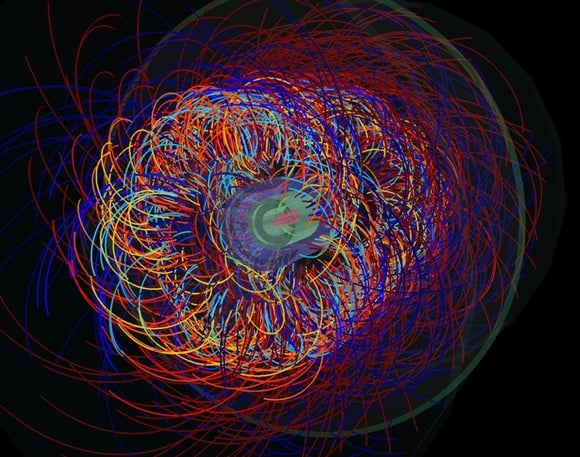This article is more than 1 year old
LHC boffins turn lead into quarko-gluotic Big Bang incrediblo-stuff
Particle-pummelling primordial plasma pulchritude
MYSTERIES of the primordio-plasma JET QUENCH

Small bang recreates Big Bang
Boffins at the detector caverns are tremendously pleased as they believe they have detected firm signs of such quarky proto-stuff being created in lead smashups within their huge subterranean instrument arrays.
“With nuclear collisions, the LHC has become a fantastic 'Big Bang' machine,” says Jürgen Schukraft, spokesperson for the ALICE experiment team.
Physicists are particularly chuffed with the lead-blasting manoeuvres as jets of quarko-gluotic unfeasiblo-plasma emitted from the tiny yet violent collisions are not simply spitting out boringly but interacting in excitingly mysterious ways - this can lead to jets "quenching", which is definitely one in the 10 ring for physics.
“ATLAS is the first experiment to report direct observation of jet quenching,” said ATLAS spokesperson Fabiola Gianotti, no doubt smugly eyeing the lads from the no-quench facilities. We here on the Reg ultraboffinry desk are particularly impressed with the ATLAS success as we feared we might have inadvertently switched the vast experiment off during a visit to its control room earlier this month.
“The excellent capabilities of ATLAS to determine jet energies enabled us to observe a striking imbalance in energies of pairs of jets, where one jet is almost completely absorbed by the medium," gloats Gianotti. "It’s a very exciting result of which the Collaboration is proud, obtained in a very short time thanks in particular to the dedication and enthusiasm of young scientists.”
Not be outdone, Guido Tonelli of the CMS experiment chips in:
“It is truly amazing to be looking, albeit on a microscopic scale, at the conditions and state of matter that existed at the dawn of time ... Other striking features, like the observation of Z particles, never seen before in heavy-ion collisions, are under investigation."
Z particles or Z bosons are relatively enormous particles, with 100 times the mass of a proton, which are thought to be implicated in the weak force, one of the forces (gravity, electromagnetism, strong, weak) which make everything happen.
All the exciting ion-masher discoveries to date are to be outlined at a seminar on Thursday. Meanwhile the Collider will continue to smash heavy ions until 6 December, when it will shut down for the Christmas break. ®
